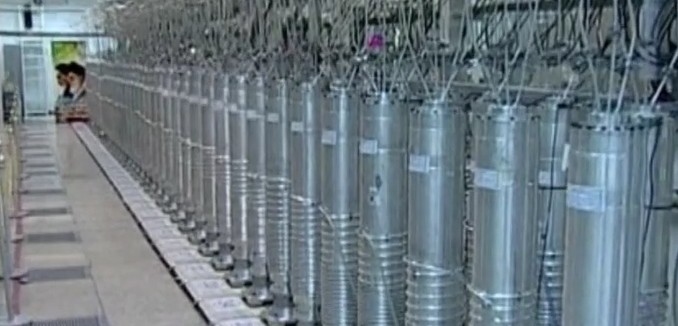After a spat between the Obama administration and The New York Times over a report on the growth of Iran’s nuclear stockpile, the think tank whose research undergirded the Times report released a new analysis (.pdf) today, in which they observed that the administration’s flustered reaction underlines potential weaknesses in an emerging nuclear deal.
In response to criticisms by the administration of a New York Times report based on its own analysis, the Institute for Science and International Security produced a new analysis. The Institute’s most recent analysis (.pdf), published today, written by David Albright and Serena Kelleher-Vergantini—respectively the executive director and research analyst for the Institute for Science and International Security—noted that according to the terms of the November 2013 Joint Plan of Action (JPOA), Iran was required to feed its enriched uranium hexaflouride gas into a conversion facility to turn it into oxide. But the Islamic republic has failed to follow those instructions in a manner that would reduce its nuclear stockpile, which was the whole point of the JPOA in the first place.
No one is disputing that Iran has met the narrow condition of feeding all of the material into the plant in the past or doubting it can do so by the end of June 2015. After all, this condition does not amount to much. Technically to meet the condition, Iran has to connect LEU hexafluoride cylinders to the plant’s process lines and begin feeding the LEU gas into the plant. It cannot be excluded that the feeding progresses slowly and some fraction of the LEU remains for some time in hexafluoride form in the cylinders connected to the EUPP’s conversion lines. But ignoring this possibility as overly nitpicky, the feeding process is straightforward. However, achieving the remaining part of the condition set forth by the JPA,namely making the LEU oxide, has been anything but easy.
As a result, concluding that Iran has met the JPA condition to “convert to oxide UF6 newly enriched up to 5%,” is incorrect. Maybe Iran can do so by the end of June, but we are skeptical, as we stated earlier. The State Department appears to be more confident. Given the stridency of their criticisms of those who have raised the oxidization issue, the State Department should explain the basis for their confidence. So far, the explanation has involved citing unnamed government nuclear experts as having a solution or working on the problem without providing any substance or even publicly acknowledging the oxidation condition in the JPA.
While feeding the hexaflouride into the conversion facility may allow Iran to fulfill the condition of the keeping its uranium stockpile below the required cap, it cannot fulfill its oxidization obligation without the conversion. The problem with the administration accepting this lower standard of compliance raises a number questions about a long-term deal.
The oxidation provision is arguably not being fulfilled, since barely any uranium oxide has been produced during the initial JPA period and its two extensions. However, the language in the provision may allow some wiggle room for Iran to claim that the plant is still not “ready,” although the language in the provision was meant to capture Iran’s plans at the time the JPA was signed, which were that the plant would soon be operational. But the State Department has not made this argument in the last few days. It has posited that Iran has only to meet the weaker “hexafluoride cap” condition and not the oxidation one. However, this approach carries risks. It is effectively ignoring a potential violation. In this case, the potential violation refers to Iran not producing the enriched uranium oxide at the end of the initial six month period of the JPA and again after its first extension. The choosing of a weaker condition that must be met cannot be a good precedent for interpreting more important provisions in a final deal. Moreover, it tends to confirm the views of critics that future violations of a long term deal will be downplayed for the sake of generating or maintaining support for the deal.
[Photo: JewishNewsOne / YouTube ]




